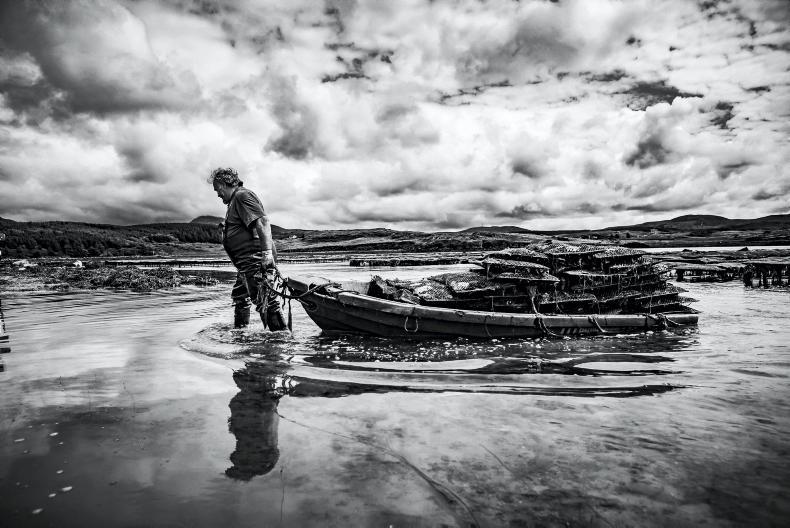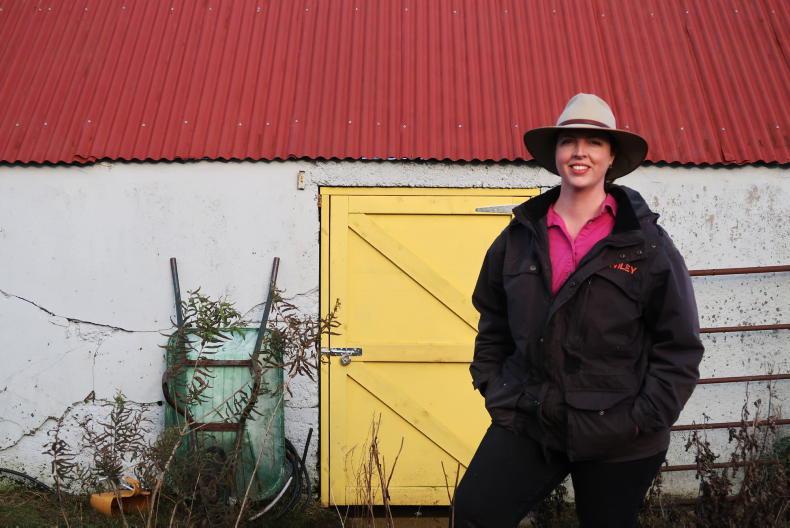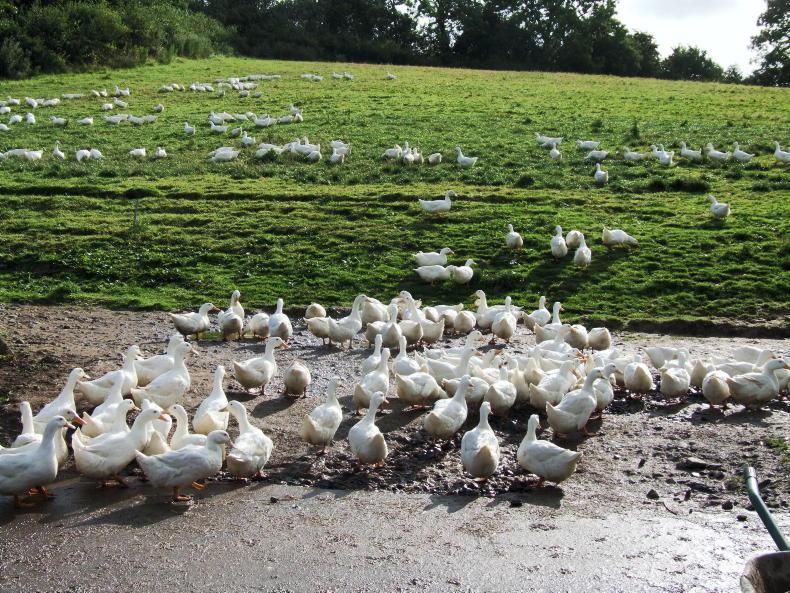Carlow is shaped like a gun in a holster. We’re there on the tip of the trigger. The border with Wicklow and Wexford is the trigger guard, shall we say.
Where we live, we call it Paulville. The area is known officially as Tankardstown. It’s outside Tullow.
Our house would have been one of the farm houses on the Paulville Estate, which my great-grandfather bought up a lot of.
We had a stud farm growing up. My father had a well-known Irish draught stallion, Errigal. It was his progeny that really made a name for themselves, King of Diamonds and Errigal Flight.
I’ve a large interest in horses, but it’s not the interest you’re thinking of. It’s an ever increasing interest, in that I’ve to pay for them. It’s the wrong kind of interest. My children are into horses now.
The high seas
I studied marine engineering in what was known grandly as the Crawford Municipal Technical Institute. It’s now the art college in Cork.
A very bad place to send young fellas to study, actually. Directly opposite it was a convent, beside it was another convent and behind it was the Bishop’s orchard. So could you be any more tempted than that?

Edward Byrne's home after renovation.
I worked in the North Sea as a marine engineer, on ships doing hydrographic and seismic surveys. I also resurveyed the ports for the Nigerian Ports Authority after the Nigerian-Biafran War.
One of the advantages of being a marine engineer at that time was that I was involved in, for want of a better word, the periphery of the oil industry. I had very long lead times before going to sea.
I love old buildings and I if I was anywhere that there was a big old house or an old ruin to visit, I would.
A lot of my friends then were doing up old houses, but they were complaining they couldn’t get traditional materials for them. I had seen them in all the buildings just left there to rot.
I started salvaging old building materials with a view to either buying and restoring a house myself or building a traditional house using these materials. I started selling off the stuff that I didn’t want, the surplus.
Then I met my wife and we had a son. I sort of gave up going back to sea. It wasn’t a deliberate thing, it just evolved into that and the business became full time.
Changing direction
Initially, we were mainly selling the heavy building materials; slates and bricks. Originally, we tended to buy up derelict old buildings. The builders who knew we were doing that would contact us and offer us buildings they had to demolish. We only took materials from buildings if they were going to come down anyway.
I decided to come away from that side of the business a bit then, new regulations were making it more difficult.
By complete accident I ended up in West Dean College in Sussex doing a series of English heritage master classes.
As a result of doing that, I was offered an agency of hydraulic lime from France. When it says “hydraulic” it means it sets both with and under water.
A lot of the traditional buildings that have been renovated in Ireland, we supplied building materials for
That was how we were luckily able to diversify into selling lime and scale back the other side of the business, which we still have, but at this stage it’s not massive. We were one of the first people to import hydraulic lime back into Ireland. That was in 1997-98. We bring it in now from both France and Germany.
A lot of the traditional buildings that have been renovated in Ireland, we supplied building materials for. For example, Kylemore Abbey. I’d also be regularly called on to give advice on how to best use these materials and conserve the traditional building.
Up to the time of the COVID we ran a very simple course – we ran more complicated ones too – but that one was on how to use lime for anybody from builders to house owners and whoever else wanted to come.
Lime and cement
Before cement, lime was used. Well actually, in a lot of areas in Ireland, Britain and on the continent, clay mortars were used for the building, lime was only used for the pointing and the plastering.
Lime is extremely flexible as a building material. You don’t need expansion joints when you build with lime, but you do with cement mortars
Cement was invented in the 1800s, but it really didn’t get going until after World War I. Then it became cheap. It’s a fantastic material when correctly used. The production of hydraulic lime died out in a lot of places once cement became available.
Lime is extremely flexible as a building material. You don’t need expansion joints when you build with lime, but you do with cement mortars.
Lime takes longer to set than cement. People think, we’ll come in tomorrow and put on another coat of lime, which you can do with cement every day or two. But you can’t with lime.
You couldn’t get the proper lime plaster that time in Ireland
Depending on the weather and the type of lime you’re using, you might have to leave it four to seven days between coats.
I renovated my own house about 35 years ago. You couldn’t get the proper lime plaster that time in Ireland. So we put a modified type of lime and cement plaster on the inside and we left the outside, because we couldn’t afford to do anything there. We only did the outside in the last number of years.
Did you ever see the blacksmith’s ass well-shod? You never get around to doing work for yourself, do you? It’s always tomorrow.
Read more
Podcast: Dragons' Den, Game of Thrones and country life with Claire Hunter
‘Women empowering women, it’s probably the most valuable tool you have’
Carlow is shaped like a gun in a holster. We’re there on the tip of the trigger. The border with Wicklow and Wexford is the trigger guard, shall we say.
Where we live, we call it Paulville. The area is known officially as Tankardstown. It’s outside Tullow.
Our house would have been one of the farm houses on the Paulville Estate, which my great-grandfather bought up a lot of.
We had a stud farm growing up. My father had a well-known Irish draught stallion, Errigal. It was his progeny that really made a name for themselves, King of Diamonds and Errigal Flight.
I’ve a large interest in horses, but it’s not the interest you’re thinking of. It’s an ever increasing interest, in that I’ve to pay for them. It’s the wrong kind of interest. My children are into horses now.
The high seas
I studied marine engineering in what was known grandly as the Crawford Municipal Technical Institute. It’s now the art college in Cork.
A very bad place to send young fellas to study, actually. Directly opposite it was a convent, beside it was another convent and behind it was the Bishop’s orchard. So could you be any more tempted than that?

Edward Byrne's home after renovation.
I worked in the North Sea as a marine engineer, on ships doing hydrographic and seismic surveys. I also resurveyed the ports for the Nigerian Ports Authority after the Nigerian-Biafran War.
One of the advantages of being a marine engineer at that time was that I was involved in, for want of a better word, the periphery of the oil industry. I had very long lead times before going to sea.
I love old buildings and I if I was anywhere that there was a big old house or an old ruin to visit, I would.
A lot of my friends then were doing up old houses, but they were complaining they couldn’t get traditional materials for them. I had seen them in all the buildings just left there to rot.
I started salvaging old building materials with a view to either buying and restoring a house myself or building a traditional house using these materials. I started selling off the stuff that I didn’t want, the surplus.
Then I met my wife and we had a son. I sort of gave up going back to sea. It wasn’t a deliberate thing, it just evolved into that and the business became full time.
Changing direction
Initially, we were mainly selling the heavy building materials; slates and bricks. Originally, we tended to buy up derelict old buildings. The builders who knew we were doing that would contact us and offer us buildings they had to demolish. We only took materials from buildings if they were going to come down anyway.
I decided to come away from that side of the business a bit then, new regulations were making it more difficult.
By complete accident I ended up in West Dean College in Sussex doing a series of English heritage master classes.
As a result of doing that, I was offered an agency of hydraulic lime from France. When it says “hydraulic” it means it sets both with and under water.
A lot of the traditional buildings that have been renovated in Ireland, we supplied building materials for
That was how we were luckily able to diversify into selling lime and scale back the other side of the business, which we still have, but at this stage it’s not massive. We were one of the first people to import hydraulic lime back into Ireland. That was in 1997-98. We bring it in now from both France and Germany.
A lot of the traditional buildings that have been renovated in Ireland, we supplied building materials for. For example, Kylemore Abbey. I’d also be regularly called on to give advice on how to best use these materials and conserve the traditional building.
Up to the time of the COVID we ran a very simple course – we ran more complicated ones too – but that one was on how to use lime for anybody from builders to house owners and whoever else wanted to come.
Lime and cement
Before cement, lime was used. Well actually, in a lot of areas in Ireland, Britain and on the continent, clay mortars were used for the building, lime was only used for the pointing and the plastering.
Lime is extremely flexible as a building material. You don’t need expansion joints when you build with lime, but you do with cement mortars
Cement was invented in the 1800s, but it really didn’t get going until after World War I. Then it became cheap. It’s a fantastic material when correctly used. The production of hydraulic lime died out in a lot of places once cement became available.
Lime is extremely flexible as a building material. You don’t need expansion joints when you build with lime, but you do with cement mortars.
Lime takes longer to set than cement. People think, we’ll come in tomorrow and put on another coat of lime, which you can do with cement every day or two. But you can’t with lime.
You couldn’t get the proper lime plaster that time in Ireland
Depending on the weather and the type of lime you’re using, you might have to leave it four to seven days between coats.
I renovated my own house about 35 years ago. You couldn’t get the proper lime plaster that time in Ireland. So we put a modified type of lime and cement plaster on the inside and we left the outside, because we couldn’t afford to do anything there. We only did the outside in the last number of years.
Did you ever see the blacksmith’s ass well-shod? You never get around to doing work for yourself, do you? It’s always tomorrow.
Read more
Podcast: Dragons' Den, Game of Thrones and country life with Claire Hunter
‘Women empowering women, it’s probably the most valuable tool you have’










SHARING OPTIONS